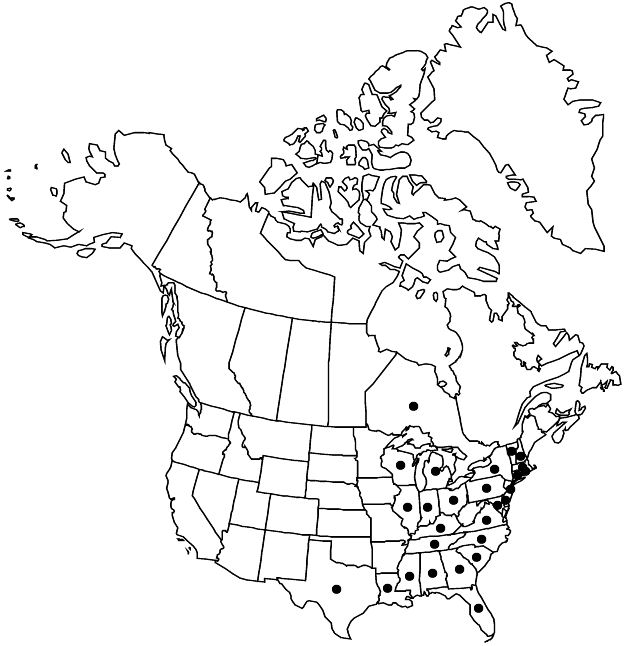Difference between revisions of "Lechea minor"
Sp. Pl. 1: 90. 1753.
Common names: Thymeleaved pinweed
Endemic
Synonyms: Lechea thymifolia Michaux
FNA>Volume Importer |
imported>Volume Importer |
||
| (3 intermediate revisions by 2 users not shown) | |||
| Line 16: | Line 16: | ||
|name=Lechea thymifolia | |name=Lechea thymifolia | ||
|authority=Michaux | |authority=Michaux | ||
| + | |rank=species | ||
}} | }} | ||
|hierarchy=Cistaceae;Lechea;Lechea minor | |hierarchy=Cistaceae;Lechea;Lechea minor | ||
| Line 40: | Line 41: | ||
-->{{#Taxon: | -->{{#Taxon: | ||
name=Lechea minor | name=Lechea minor | ||
| − | |||
|authority=Linnaeus | |authority=Linnaeus | ||
|rank=species | |rank=species | ||
| Line 55: | Line 55: | ||
|publication year=1753 | |publication year=1753 | ||
|special status=Endemic | |special status=Endemic | ||
| − | |source xml=https:// | + | |source xml=https://bitbucket.org/aafc-mbb/fna-data-curation/src/2e0870ddd59836b60bcf96646a41e87ea5a5943a/coarse_grained_fna_xml/V6/V6_737.xml |
|genus=Lechea | |genus=Lechea | ||
|species=Lechea minor | |species=Lechea minor | ||
Latest revision as of 22:23, 5 November 2020
Herbs, biennial or perennial. Stems: basal produced; flowering erect, 20–50 cm, sparsely sericeous. Leaves of flowering stems whorled or opposite; blade elliptic to lanceolate, 8–15 × 4–7 mm, apex acute, abaxial surface pilose on midvein and margins, adaxial sparsely pilose or glabrous. Pedicels 1 per axil, 0.5–2 mm. Flowers: calyx 1.6–2 mm, outer sepals longer than inner. Capsules ellipsoid to ellipsoid-ovoid, 1.5–2 × 1–1.5 mm, ± equaling calyx. Seeds 2–3.
Phenology: Flowering summer; fruiting late summer–fall.
Habitat: Dry sandy or gravelly soil of pine-oak woodlands, savannas, sandhills, disturbed sites
Elevation: 10–600 m
Distribution

Ont., Ala., Conn., Del., Fla., Ga., Ill., Ind., Ky., La., Md., Mass., Mich., Miss., N.H., N.J., N.Y., N.C., Ohio, Pa., R.I., S.C., Tenn., Tex., Vt., Va., Wis.
Discussion
Lechea minor may have been extirpated from the Canadian portion of its range.
Selected References
None.
Lower Taxa
None.